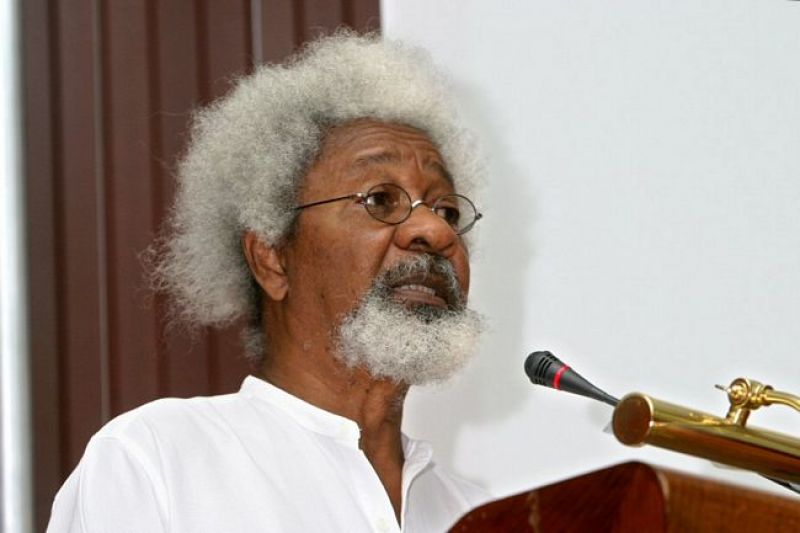Of Vanishing Symbols and Decaying Value Structures in Biafra/Igboid Cultural Areas: The Igbo Yams as Metaphor
Posted by FactNews | 7 years ago | 2,669 times

I had in a preceding piece lamented the state and status of Efi/Ehi Igbo in Igboid areas. The central thrust of my argument that the decline and loss of the Igboid totemic animals, plants, and cultural foundations is symptomatic, indeed emblematic of the unpreparedness of the Igbo to matters crucial for a successful exit from the Nigerian drama.
A few of my friends had suggested that the governments in Igboid areas should take the blame for the dramatic decline in the population of Efi Igbo. Well, I am of a different mind on that. The fact of the matter is that the Igbos themselves have neglected what belongs to them in pursuit of alien substitutes, which is itself, a recurring decimal in the decline of Igboid culture.
In contrast, there is NO prominent Hausa/Fulani, now matter how urbane or sophisticated who does not invest in the cattle business. Thousands of the heads of cattle you see grazing and prowling all over Nigeria are often owned by prominent Hausa/Fulani elite. The lowly herdsman is often an agent/employee but this is a story for another day. The point is that if every Igbo millionaire kept 4-5 Efi Igbo, the Igbo cow will not be on the verge of extinction today. The fact that we don't do so speaks volumes about our detachment from our roots and inability to forge a nation-state.
The fate of the ehi Igbo resonates with that of Igbo yams. Perhaps a little detour into the history of yams in Igboid culture may be helpful and enlightening. No ethnic or cultural group anywhere in the world celebrates, in fact, venerates the yam as much as the Igboid. Yams, known botanically as dioscorea, historically are indigenous to Bantu peoples of West Africa.
The yam belt stretches from Cameroon, extending across Nigeria, Benin Republic, Togo, Ghana, Cote D'Ivoire. Apart from West Africa, the only other place where a handful of yam species are found is China from whence the Asiatic yams spread to Laos, Vietnam, and Cambodia. The yams grown in Haiti, Jamaica and in some parts of the USA were in fact those taken to the so-called New World by enslaved West Africans during the trans-Atlantic slave trade.
Till today, the wild species of yams can be found in the virgin forests of Cameroon, and Southern Nigeria. Gene sequencing of modern Igbo yams in juxtaposition with its wild cousins in the forests confirm that yams have been cultivated by Igboid peoples for thousands, yes, thousands of years.
For more than 12 thousand years of continuous habitation of the Igboid parts of Nigerian, Igbo yam species such as D. Cayenenis (yellow yam, often used in Igbo native medicine to treat diabetes), and Ji mmiri (used in ancient times in Igboland for birth control-it contains the steroid, disogenin), Ji Abali (useful for preparing fishing potions), and several special of yams were widely cultivated. But the most popular was the Dioscorea Rotundata.
In these millennia of brilliant farming techniques, the Igboid succeeded in removing much of the alkaloids in the forest species of yams. And then, the yam became the king of crops. Forget cassava, it was introduced in the 1986s by the colonial interlopers. Cassava was a later day injection into the diet and culture of the Igboid. The real deal was YAM, the king of crops.
Over the millennia, the Igboid assigned a deity to the yam, Ahiajoku, the god yams. This is where you get surnames of Njoku, Ajoku, Nwanjoku, et cetera. The central role of yams in Igboid culture cannot be over emphasized. You were a NOBODY in Igboid areas if you had no yam barns. Such Igbo names as Diji, Ohuoba, Jizuru, Jinanwa, Ezeji, et cetera were given to celebrate the yam and to underscore the importance of yams to Ndigbo.
Fast forward now to 2017. Of the estimated 22 million metric tons of yams cultivated and harvested across the yam belt, Igboid areas account for less than 2 per cent of yam production. We celebrate our New Yam Festivals with yams imported from Zakibiam in Benue State and Jalingo in Taraba!
A few Igbos determined to take Ezeji titles today import yams from Zakibiam. Worse still, the indigenous species of yams are virtually extinct. Many Igbos today, if taken to a farm, cannot differentiate the yam stalk from other crops. Would an Indian agitating for India be ignorant of rice? Would an Ethiopian activist agitating for Ethiopia be ignorant of matters concerning coffee?
Why is yam important to the Igboid question in relation to Biafra? I argue that the neglect and inattention to matters culturally Igbo and intrinsic to the Igbo speaks volumes about the flakiness and lack of intellectual depth in the current agitation for a Bia-exit, apologies to the Brexitters.
I am painfully aware that some of my brethren who have been gunned down by trigger happy soldiers recently over the Biafra question feasted on yams from Zakibiam before they were murdered. The irony should not be lost on any of us.
In the next piece, I shall examine the state and status of that most celebrated of crops in Igboland, the cola nut: Oji Igbo.
-Ikechi Mgbeoji
Readers Comments
comment(s)
No comments yet. Be the first to post comment.





_1.jpg)


